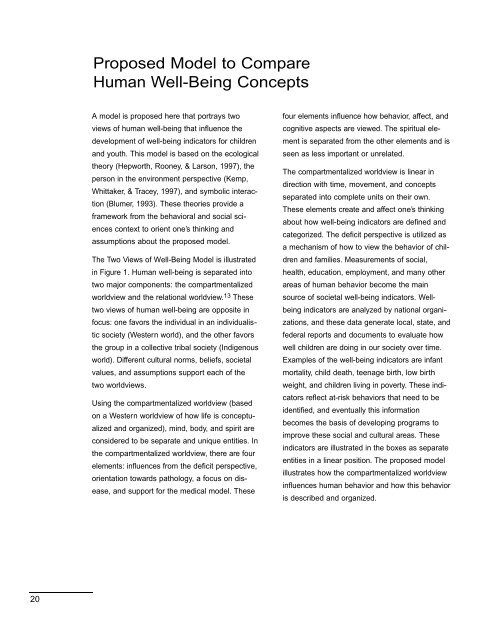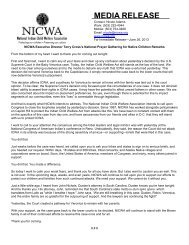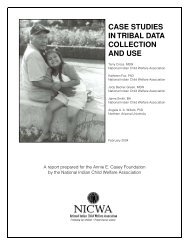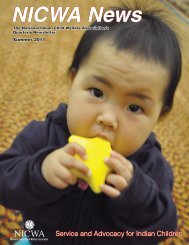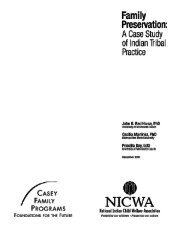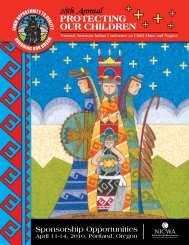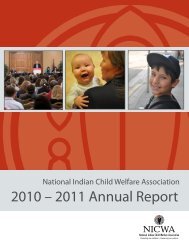Native American Children and Youth Well-Being Indicators
Native American Children and Youth Well-Being Indicators
Native American Children and Youth Well-Being Indicators
Create successful ePaper yourself
Turn your PDF publications into a flip-book with our unique Google optimized e-Paper software.
Proposed Model to CompareHuman <strong>Well</strong>-<strong>Being</strong> ConceptsA model is proposed here that portrays twoviews of human well-being that influence thedevelopment of well-being indicators for children<strong>and</strong> youth. This model is based on the ecologicaltheory (Hepworth, Rooney, & Larson, 1997), theperson in the environment perspective (Kemp,Whittaker, & Tracey, 1997), <strong>and</strong> symbolic interaction(Blumer, 1993). These theories provide aframework from the behavioral <strong>and</strong> social sciencescontext to orient one’s thinking <strong>and</strong>assumptions about the proposed model.The Two Views of <strong>Well</strong>-<strong>Being</strong> Model is illustratedin Figure 1. Human well-being is separated intotwo major components: the compartmentalizedworldview <strong>and</strong> the relational worldview. 13 Thesetwo views of human well-being are opposite infocus: one favors the individual in an individualisticsociety (Western world), <strong>and</strong> the other favorsthe group in a collective tribal society (Indigenousworld). Different cultural norms, beliefs, societalvalues, <strong>and</strong> assumptions support each of thetwo worldviews.Using the compartmentalized worldview (basedon a Western worldview of how life is conceptualized<strong>and</strong> organized), mind, body, <strong>and</strong> spirit areconsidered to be separate <strong>and</strong> unique entities. Inthe compartmentalized worldview, there are fourelements: influences from the deficit perspective,orientation towards pathology, a focus on disease,<strong>and</strong> support for the medical model. Thesefour elements influence how behavior, affect, <strong>and</strong>cognitive aspects are viewed. The spiritual elementis separated from the other elements <strong>and</strong> isseen as less important or unrelated.The compartmentalized worldview is linear indirection with time, movement, <strong>and</strong> conceptsseparated into complete units on their own.These elements create <strong>and</strong> affect one’s thinkingabout how well-being indicators are defined <strong>and</strong>categorized. The deficit perspective is utilized asa mechanism of how to view the behavior of children<strong>and</strong> families. Measurements of social,health, education, employment, <strong>and</strong> many otherareas of human behavior become the mainsource of societal well-being indicators. <strong>Well</strong>beingindicators are analyzed by national organizations,<strong>and</strong> these data generate local, state, <strong>and</strong>federal reports <strong>and</strong> documents to evaluate howwell children are doing in our society over time.Examples of the well-being indicators are infantmortality, child death, teenage birth, low birthweight, <strong>and</strong> children living in poverty. These indicatorsreflect at-risk behaviors that need to beidentified, <strong>and</strong> eventually this informationbecomes the basis of developing programs toimprove these social <strong>and</strong> cultural areas. Theseindicators are illustrated in the boxes as separateentities in a linear position. The proposed modelillustrates how the compartmentalized worldviewinfluences human behavior <strong>and</strong> how this behavioris described <strong>and</strong> organized.20


